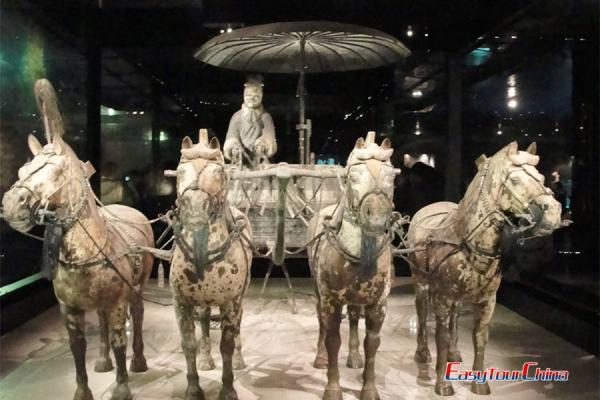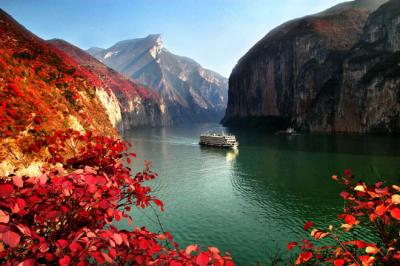Terracotta Warriors and Horses Museum (Terracotta Army)
Terracotta Warriors and Horses – one of the 8th Wonders of the World, a landmark of Xian City, is one of the must-visit attractions in China for all travelers. It is a magnificent collection of terracotta sculptures reproducing the glory of the armies of Qin Shi Huang (the first Emperor of China), and hailed as one of the world's top ten ancient tombs.
When the imposing and disciplined military formations showcase the splendid glory of ancient Eastern warfare, the lifelike and exquisite Terracotta Warriors figurines represent the pinnacle of ancient Chinese sculptural art. In March 1974, the discovery of the Terracotta Warriors stunned the world and was regarded as “one of the greatest archaeological discoveries of the 21st century.” In 1987, the Mausoleum of the First Qin Emperor and the Terracotta Army Pits were inscribed on the UNESCO World Heritage List.
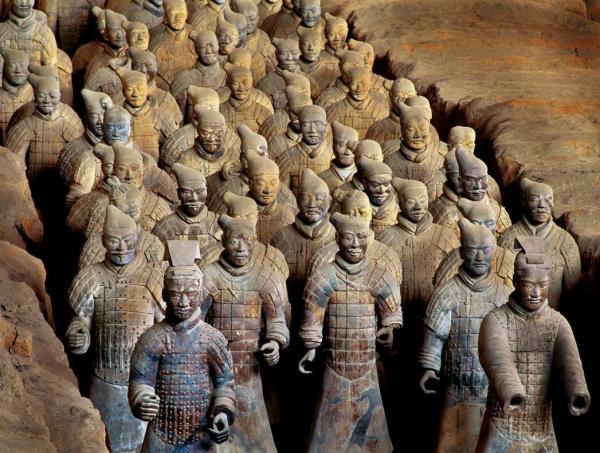
The Terracotta Army Museum of Emperor Qin Shi Huang was established in November 1975 and officially opened on October 1, 1979. It is situated atop the Terracotta Army Pit Site at the northern foot of Mount Li, 7.5 kilometers east of Lintong County and 37.5 kilometers west of Xi'an city. Together with the Lishan Garden, it forms the Qin Shi Huang Mausoleum Museum. The Qin Shi Huang Terracotta Army Museum has welcomed over 80 million visitors from home and abroad. The underground terracotta army has received over 50 million visitors, including foreign heads of state and government leaders.
Pit No. 1 contains approximately 6,000 terracotta warriors and horses, along with a large number of bronze weapons. Pit II contains over 1,300 terracotta figures and horses. Compared to Pit I, Pit II features richer content and a more complete range of military units. Pit III is smaller in scale, containing 72 terracotta figures and horses. The exhibition hall displays bronze chariots and horses I and II.
Facts about the Terracotta Warriors Museum
More Fun and Cool Facts about the Terracotta Army
How Many Terracotta Warriors?
Archaeological discoveries have revealed over 8,000 terra-cotta soldiers, 130 chariots, and 670 horses - this is almost a real ancient army. Moreover, the terracotta warriors are not confined to a single “branch of service.”There are infantry, cavalry, archers, charioteers, generals, and even civilian officials and horse trainers, showing a complete military organization.
The Mausoleum of Emperor Qin Shi Huang covers an area of 56 square kilometers. The Terracotta Warriors are just a burial pit of the mausoleum, and the main part of the mausoleum has not been fully excavated yet.
>> Related reading: Top 6 Greatest Dynasties of China

What Weapons Do the Terracotta Army Have?
The unearthed terracotta warriors originally held real weapons, such as bronze swords, bows and arrows, spears and halberds, etc. Many of these weapons are still sharp as new, thanks to a chromium salt oxidation rust prevention treatment on the surface, demonstrating the advanced metallurgical technology of the Qin Dynasty.
The Warriors Are Unique in Appearance
When you observe carefully, you will find that the faces, hairstyles, beards, and expressions of all the Terracotta Warriors are different. Some people believe that these faces might be modeled based on real Qin soldiers, which is why they are so lifelike. The craftsmen first made the basic face shape using molds, and then carried out detailed hand-carving and shaping one by one.
How Tall Are They?
Most of the Terracotta Warriors are 1.8-2 meters tall, making them taller than the average Qin people at that time. This may have been intended to showcase the majesty of the army.
Do the Terra-cotta Warriors Have Colors?
The Terracotta Army we see today display the natural color of the clay (a dull gray). But in fact, when they were first made, their entire bodies were painted with bright colored lacquer. So, why did the colors disappear? The terra-cotta warriors were buried for thousands of years, and the lacquer layer on the bottom of the paint was quickly curled and peeled off when exposed to air. The excavation technology at the time couldn't protect these colors, causing them to quickly oxidize and disappear after being unearthed, turning into the appearance we see now.
Amazing Details and Craftsmanship
The manufacturing of the Terracotta Warriors used a combination of molds and handwork. The body parts (such as the torso and arms) were standardized, while the heads and hands were personalized. Finally, they were assembled. Carefully observing the soles of the kneeling archers, you will find that the stitches are evenly spaced, and even patterns were carved to prevent slipping.
>> Recommended Xian Tours

So What is the Terracotta Army, Exactly?
In summary, first of all, the Terracotta Army is a part of the Mausoleum of the First Emperor of Qin. It is an underground army made of terracotta, built in the 3rd century BC, to protect the peace and authority of the First Emperor in the underground world, being a reflection of his vast empire and eternal ambition.
Secondly, within the pits of the Terracotta Army there are thousands of life-sized statues of officers, soldiers, chariots and horses, well-organized and almost completely recreating the entire composition of the army of the Qin Dynasty.
Finally, the significance of the Terracotta Army lies in that it not only showcases the powerful military force of the Qin Dynasty, providing "living fossils" about the military, clothing, system and technology of the Qin Dynasty, but also reflects the superb craftsmanship of that time, including pottery making, sculpture and bronze casting techniques.
>> Related reading: Best Chinese Dynasties in Architecture
The Construction History of Terracotta Warriors and Horses Site
Why was the Terracotta Army built? Human sacrifice was a cruel and barbaric burial practice that was prevalent during the establishment of slavery. Since the Spring and Autumn and Warring States periods, the practice of human sacrifice gradually gave way to the use of figurines. The Terracotta Army of the Qin Dynasty is a typical example of using figurines instead of human sacrifices. The reason why the Qin Terracotta Army achieved such a high level in terms of scale and realism was not only due to the wisdom of the craftsmen, but also because of the will of the first feudal emperor of China, Qin Shi Huang.
>> Related reading: Top 8 Greatest Chinese Emperors in History
According to historical records, Qin Shi Huang – Ying Zheng was terrified of the vanquished ghosts waiting for their revenge in the afterlife, and he also expected his rule to continue in death as it had in life. So Qin Shi Huang started spending countless manpower, material and financial resources to build this grand mausoleum since his accession to the throne at the age of 13. Nearly 720,000 labors were involved in the project. The whole construction took 38 years, even Qin Shi Huang himself could not see its completion, and after his death, the second Emperor of the Qin Dynasty – Hu Hai continued the building for over a year.
The life-size terracotta army in this underground palace has silently guarded the mausoleum for over 2000 years. And so to speak, it is the epitome and peak of using terracotta warriors and horses to replace the living burying with the dead together.
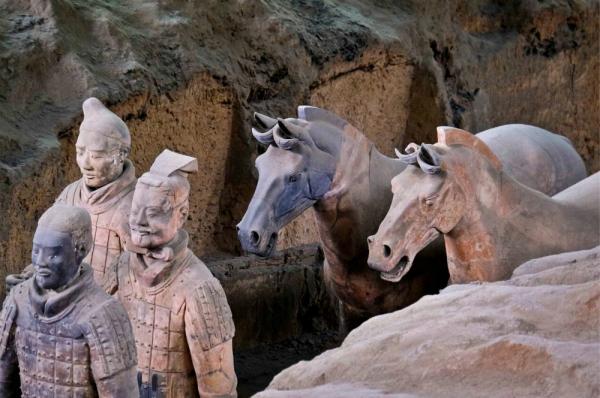
The Discovery History of Terracotta Warriors and Horses Site
Discovered in 1974, Xian Terracotta Warriors and Horses Site is one of the most important archaeological finds in the 20th century. First chamber was discovered accidentally when 9 local farmers drilled a well for water.
What to See at the Terracotta Warriors Museum
Pit 1 - Main Force Formation
The excavations kept going since then. The first pit was finished in 1974, which is built with earth and timber, measuring 210 meters long, 60 meters wide and 4.6 to 6.5 meters high, larger than a football field, containing more than 6,000 pottery figures.
The life-sized warriors were dressed and appeared ready for battle with their spears and various other weapons. Each warrior with a height of 1.8 meters wears an army uniform, which distinguishes the soldier's ranks. Three rows of seventy warriors each make up the vanguard. They are followed the main body of the army, 38 rows of troops. The terracotta figures of warriors and horses are well modeled and proportioned. The heads and hands were modeled separately and then attached.
Each warrior has different features and facial expression. No two are the same. Uniformly strong and firm in appearance, they vary in individual aspects according to age, experience and social status. Some warriors have brows knitted and mouths set like veteran fighters with rich experience and wisdom. Others have eyebrows arched and show the fiery boldness and impetuosity of young warriors. They are also those with sternly fixed jaws and determined eyes. Curled moustaches and a cavalier air distinguish the others.
>> Recommended Xian Day Tour with Terracotta Warriors
Pit 2 - Corps
Pit 2 was found in 1976, and excavation began in 1994. 124 meters long, 98 meters wide, 5 meters deep from the current surface, covering an area of approximately 6,000 square meters, this pit contains 1,400 warriors. The second pit differs greatly from the first one, primarily because of its square battle formation. This pit also contains 64 cavalrymen and even commanders to guide the troops. This display of soldiers gives insight into the work that went into the ancient Chinese army.
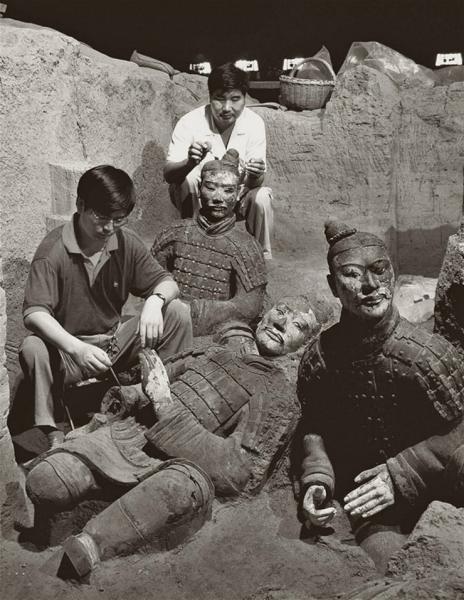
Pit 3 - Headquarters
Pit 3 was discovered in 1980. Though small, this pit is thought to be the garrison headquarters of the Qin army. It has only one chariot, six warriors and a small amount of weapons.
Bronze Chariot and Horse Exhibition Hall
The bronze chariot and horses were among the burial offerings for Emperor Qin Shi Huang, symbolizing part of his imperial carriage. Their design faithfully replicates the form of actual chariots. Previously, all chariots unearthed in Chinese archaeological discoveries were wooden and had decayed by the time of excavation. The discovery of these bronze chariots and horses allows us to clearly envision the true appearance of ancient Chinese imperial carriages. The bronze chariots were crafted at half the scale of the actual imperial chariots used by Emperor Qin Shi Huang. The canopy and interior of the carriage are adorned with exquisite painted patterns. The gold and silver ornaments on the two bronze chariots weigh a total of 14 kilograms, reflecting their noble status.
This set of bronze chariots and horses is designated as Chariot No. 1 and Chariot No. 2 according to the order in which they were unearthed. Both chariots feature a single yoke, two wheels, and are drawn by four horses. The two horses in the center are called the harness horses, primarily responsible for pulling the yoke; the two horses on the sides assist the harness horses in pulling the chariot and are called the side horses.
Pit of Performing Figures (Burial Pit K9901 of Qin Shi Huang's Mausoleum)
This pit measures 80.8 meters in total length and 40 meters in east-west width, with the main section spanning 12.8 to 16.7 meters across. It contains two east-west rammed-earth partition beams and three east-west passageways. The entrance passages at both ends measure 20.8 meters in length and 7.6 to 11.4 meters in width. Located approximately 5 meters below the current ground level, the pit covers an area of about 700 square meters. It is an underground tunnel-like earthen structure that collapsed due to fire.
The excavation yielded two bronze tripods and over twenty clay figurines. Most of the clay figurines unearthed from the pit have exposed upper bodies and wear short, colored skirts. Life-sized and displaying varied postures, these figurines represent a previously unseen style among the discoveries of Qin Shi Huang's Mausoleum .
The Mystery of Terracotta Warriors and Horses' Production Place
Chinese scientists have finally solved a lengthy riddle of where the 8,000 terracotta warriors were made that were unearthed in the 1970s from the tomb of Qin Shi Huang (the first emperor who unified China). After 3-year joint research project, scientists reached the conclusion that the world-renowned terracotta warriors were created close to where they were excavated.
In 1987 Xian Terra Cotta Warriors and Horses Museum was listed in the World Heritages sites.
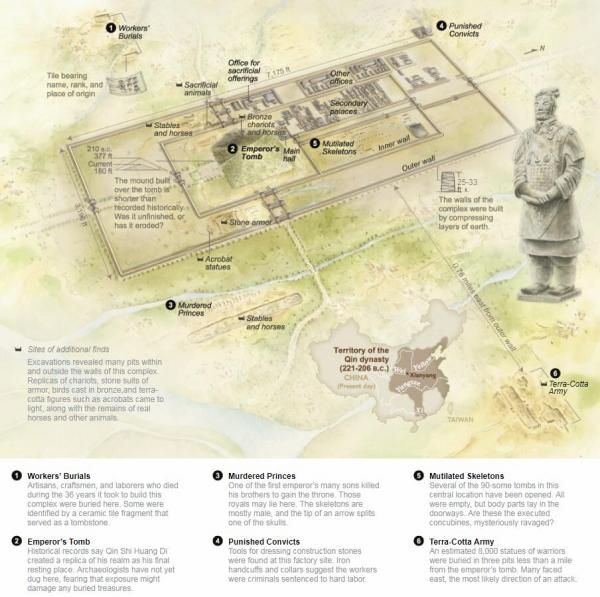
Opening Hours and Best Time to Visit
The Museum of Qin Terracotta Warriors and Horses can be visit all year round.
Buying Tickets
March 16th - November 15th: 08:30-17:00
November 16th - March 15th: 08:30-16:30
Checking-in Time
March 16th - November 15th: 08:30-18:00
November 16th - March 15th: 08:30-17:30
According to the Xian weather, the spring (March - May) and autumn (September - October) seasons have mild climate and are the best seasons of the year to visit the Terracotta Army. The best time of the day is from 8:30 to 10:30 in the morning and from 2:00 to 4:00 in the afternoon when the museum is relatively less crowded. Be sure to avoid the China Golden Week as there will be too many people.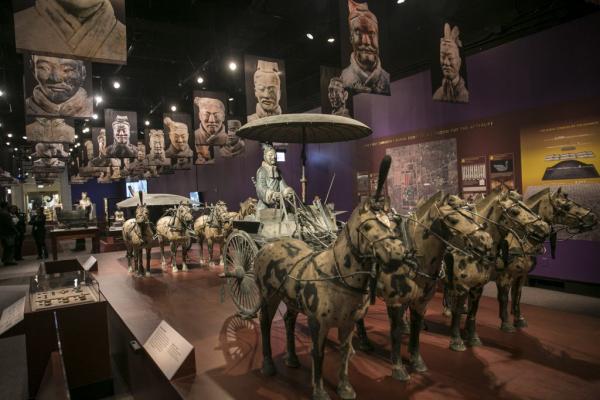
How to Get to Terracotta Warriors Museum
Get to the Terracotta Warriors and Horses Museum from Xian Airport:
Take Airport Shuttle Bus to Xian Railway Station, and then take Tourist Bus Line 5 (306), 914 or 915, and get off at the museum, which will take 2 hours in all.
Get to the Terracotta Warriors and Horses Museum from Xian North Railway Station:
Take Bus 266 (It’s in the west of the Xian Railway Station Square.), get off at the Xian Railway Station, and then change to Bus 306, 914 or 915, and finally reach the museum. It will take 2 hours in all.
Get to the Terracotta Warriors and Horses Museum from Xian Railway Station:
Take Tourist Bus Line 5 (306), 914 or 915, and then arrive at the museum. It will take 1 hour in all.
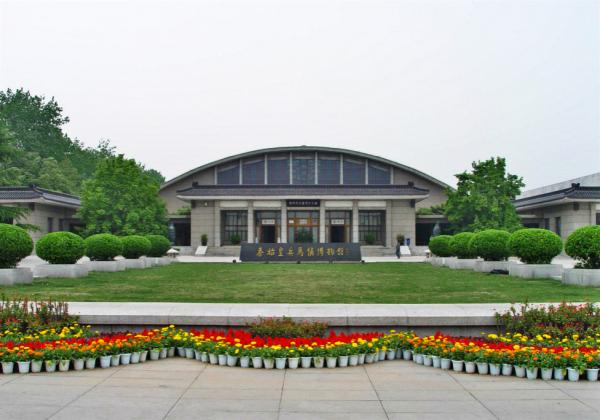
Travel Tips
1. When taking pictures, please remember not to use the flash, and it is not allow walking down to the pits.
2. The souvenir shops and the restaurants around the museum aren’t recommended, because they are usually over-priced and not the best. Some even may rip you off. A better place for souvenirs is the market in Xian.
3. Avoid to be scammed by buying the books signed by someone who claims to be one of the discoveries of the Terracotta Army. Because they’re all fake.
4. The museum is accessible to wheelchairs. >> China Disabled Tours
Plan Your Terracotta Warriors Tour with ETC
Travel in Xian and visit Terracotta Army with Easy Tour China’s local exert guides. We can create China tours based on your needs.
